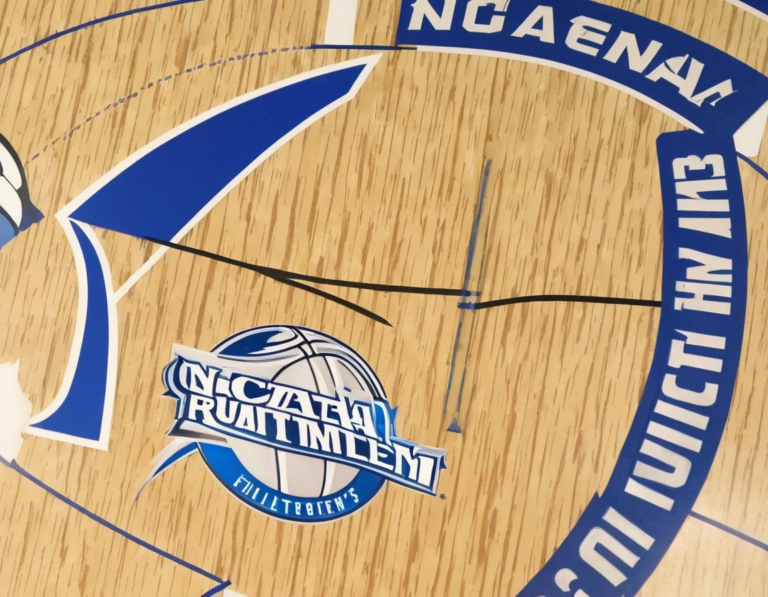How to Fill Out Your NCAA Tournament Bracket

The NCAA Men’s Basketball Tournament is a beloved tradition for millions of fans, and filling out a bracket is a time-honored ritual. But with so many games and so many upsets, predicting the champion can be a daunting task. Don’t worry, we’re here to help you make informed picks and increase your chances of winning your bracket pool.
1. Understand the Format of the NCAA Tournament
The NCAA Tournament is a single-elimination tournament with 68 teams competing for the national championship. The tournament starts with the First Four, where four teams play for the final four spots in the 64-team field.
The 64 teams are then divided into four regions, with each region having 16 teams. The top four seeds in each region are given a bye, while the remaining teams play in the First Round. From there, the tournament proceeds in a single-elimination format until the Final Four, where the last four teams compete for the championship.
2. Research the Teams (and Their Matchups)
The key to successful bracket predictions is thorough research. Don’t just rely on seeds and past performances.
- Examine team records: Look beyond overall records, and examine how teams performed against conference opponents, especially in the last few weeks of the regular season.
- Analyze team strengths and weaknesses: What are the team’s strengths? Are they strong offensively or defensively? Do they have a dominant scorer, a strong rebounder, or a lockdown defender? What are their weaknesses? Are they vulnerable to fast breaks? Do they struggle from the free throw line?
- Consider injuries: Injuries can have a significant impact on a team’s performance. Check for any recent injuries or player absences that could affect the outcome of games.
- Pay attention to matchups: Some teams perform better against certain styles of play. For example, a team that plays a fast-paced, high-scoring offense might struggle against a team that prefers a slower, more methodical approach.
3. Use the NCAA Tournament Selection Committee’s Bracketology
The NCAA Tournament Selection Committee releases a bracketology every week leading up to the tournament, which provides insights into the committee’s thinking. While the committee’s projections are not always accurate, they provide a good starting point for your own bracket predictions. You can find the latest bracketology on the NCAA website.
4. Utilize Online Bracket Resources (with Caution)
Several online resources can help you make informed bracket predictions, like ESPN, CBS Sports, and even dedicated bracket prediction websites. These tools offer data analysis, expert predictions, and simulation tools that can help you make more informed picks.
- Data Analysis: Websites like ESPN and CBS Sports provide detailed statistics about teams and their matchups, including historical performance, team rankings, and head-to-head records. This data can help you identify potential upsets and predict the outcomes of individual games.
- Expert Predictions: Many experts, analysts, and former players offer their bracket predictions online. While these predictions can be helpful, remember that experts are not always right. It’s crucial to use these predictions as a guide and not rely solely on them.
- Bracket Simulation Tools: These tools allow you to create a bracket and then simulate the tournament based on different variables, such as team strength, matchups, and seeding. This can help you see how your bracket would perform under various scenarios.
Important Note: While these online resources can be valuable, remember that they are only tools. Don’t rely solely on their predictions. Use your own research and judgment to make informed decisions.
5. Don’t Be Afraid to Pick Upsets (But Don’t Go Crazy)
Upsets are a part of the NCAA Tournament, and the possibility of picking an unexpected winner can be a thrilling part of bracket-filling. However, it’s important to pick upsets strategically.
- Look for vulnerable top seeds: Top seeds are not always guaranteed to win, especially if they face a strong opponent or have a history of early tournament exits.
- Consider underdog teams with momentum: Teams that have been playing well and have momentum going into the tournament can be dangerous upsets.
- Don’t pick too many upsets: Picking too many upsets will likely leave you with a poor bracket. It’s best to pick a few upsets strategically, but don’t go overboard.
6. The Importance of “The Sweet Sixteen”
The Sweet Sixteen is a crucial point in the tournament. It’s where many brackets start to unravel, as upsets become more common. If you can accurately predict the Sweet Sixteen, you’ll be in good shape for the rest of the tournament.
7. Don’t Forget the Final Four and National Championship
The Final Four and national championship games are the culmination of the tournament. While predicting these games is difficult, it’s important to use the same strategies as you did for the earlier rounds. Consider team matchups, strengths and weaknesses, and historical performance.
8. Have Fun and Enjoy the Tournament
Ultimately, the NCAA Tournament is about enjoying the games and the excitement of the competition. Don’t stress too much about getting every pick right. Have fun, and good luck!
9. Tips for Picking a Winning Bracket
- Don’t rely solely on past performance: While history can be a good guide, teams can change from year to year.
- Consider coaching experience and styles: Some coaches have a proven track record of success in the tournament.
- Look for teams with a strong defense: Defense can be a key factor in tournament success.
- Pay attention to the home court advantage: Teams that have a home court advantage can be more difficult to beat.
10. Final Thoughts
Filling out an NCAA Tournament bracket is a fun and exciting tradition, but it can be challenging. By using the tips and strategies outlined above, you can increase your chances of picking a winning bracket and enjoying a successful tournament. Remember, do your research, be strategic with your picks, and most importantly, have fun!














